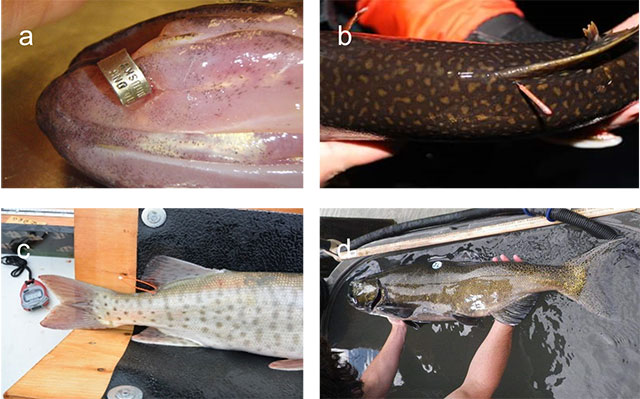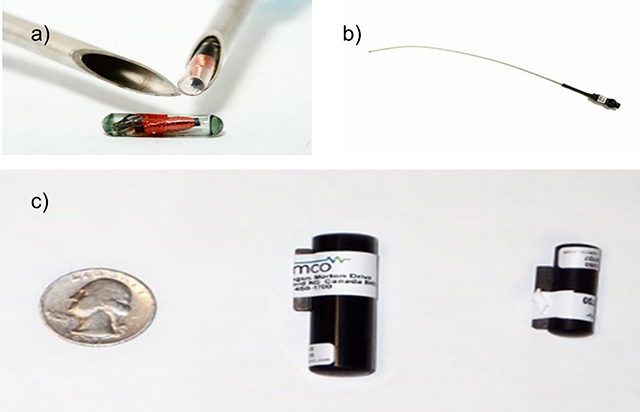Fish tags
Learn about fish tags, fish tag research and what to do if you catch a tagged fish.
Overview
A fish tag is a marking or device that helps biologists and researchers identify an individual fish or groups of fish. Fish tags can be located either:
- on the outside of the fish (known as external tags)
- inside the body of the fish (known as internal tags)
Why we tag fish
We tag fish to collect information about fish:
- population size
- mortality rates
- growth
- movement
- habitat use
To learn about the fish population using external tags, we require other information from the person who caught the fish, such as:
- the fish species
- when and where you caught the tagged fish
- the fish’s unique tag identification number
- whether you harvested (kept) or released the fish
If we know how many tagged fish are captured and harvested by anglers, biologists can estimate population size and mortality rate of a fish population (how many fish died).
Many internal fish tag devices actively transmit a signal. Biologists or researchers can pick up the signal by tracking fish in the field or by using stationary receivers located in the environment near the fish (Figure 1). The data from the signals can provide more detailed information on fish movement and habitat use, which is difficult to get from external tags.
Figure 1: Examples of a) a biologist actively tracking fish movement using a radio antenna and b) a stationary acoustic receiver on the lake bottom.
We have tagged many fish species in watersheds across Ontario. Learn about our ongoing fish tagging studies on Ontario GeoHub:
External fish tags
External tags are often made of metal or plastic. They can be clamped onto the body or inserted into the fish’s muscle tissue, like a piercing.
Some of the most common external tags we use are:
- jaw tags
- spaghetti tags
- loop tags
- disc tags
All external fish tags have a unique code that allows us to identify the fish. Other information printed on tags include the name of the agency or institution that tagged the fish and their contact information so they can be notified if a fish is caught.
Figure 2: Examples of fish tags we use a) jaw tag, b) spaghetti tag, c) loop tag, and d) disc tag.
Internal tags
Figure 3: Examples of internal tags used by the MRNF: a) Embedded Passive Transponder, b) radio transmitter, c) acoustic transmitter."
Internal devices are used to:
- identify a fish
- provide information on fish movement and habitat use
Internal devices can be implanted with a needle or surgically implanted in the fish’s abdominal cavity. The main types of internal tags are:
- passive integrated transponders (PIT tags)
- radio transmitters
- acoustic transmitters
Internal devices send out a signal that provides a unique code to identify an individual fish. Fish with internal devices are very hard to visually identify because the needle or surgical wounds left after the device is implanted will heal and leave little to no scarring. To address this issue, we often add an external tag to fish along with the internal device.
Report a fish tag
To help us with our research, you can report a tagged fish you have caught. When you report a fish tag, we will ask you to provide the following information:
- when and where you caught the tagged fish
- the fish’s unique tag identification number
- whether you harvested (kept) or released the fish
This important information allows our biologists and researchers to better understand our fish populations and develop science-based policy, fishing regulations and conservation initiatives.
Caught a tagged fish? Please report it using the following form:


